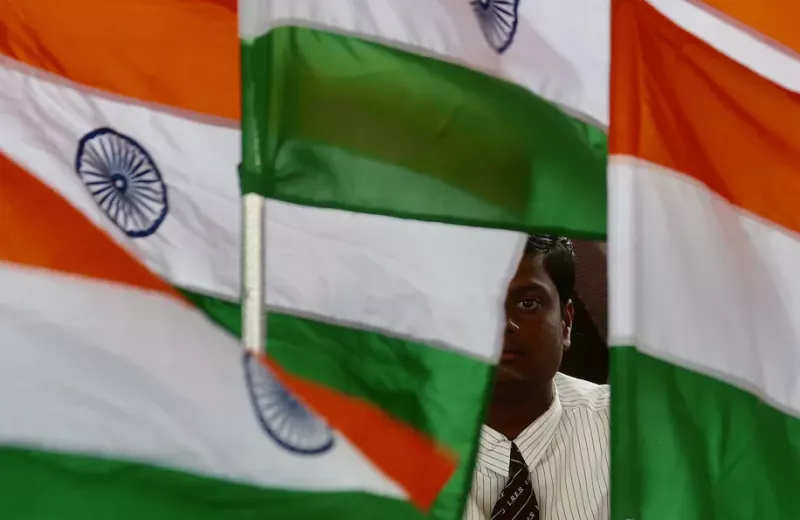
When the journalist Mohammed Zubair was arrested over a 4-year-old tweet that borrowed a pun from an old movie, on the charge of hurting religious sentiments, Arnab Goswami, a prime-time anchor at Republic TV, one of India’s leading news networks, was furious — but not at the assault on freedom of expression that the arrest represented. He was mad at Zubair.
On another network, Times Now (owned by India’s wealthiest newspaper group), a garish gold band proclaimed an alleged double standard of the “#Zubair Lobby Hypocrisy”. This was the same channel on which Nupur Sharma, a spokeswoman for the ruling Bharatiya Janata Party (BJP) (since suspended), had made disparaging remarks about the prophet Muhammad, triggering an international diplomatic kerfuffle with the Arab world. Zubair was among the first to highlight the remarks and the channel was gunning for him.
To be sure, in any robust democracy, journalists — or politicians— should not face prison over remarks, no matter how lighthearted or insulting. But many prominent Indian TV journalists have displayed an ugly doublespeak when it comes to whose liberties they are prepared to protect. If anyone is hypocritical, it is them.
Far from being bulwarks against political attacks on free speech, India’s news channels have become factories of hate. As India marks her 75th birthday, the country’s TV networks are presiding over the death of journalism.
Their carefully constructed prime-time narratives line up perfectly with the Hindutva politics of the right wing; in fact, their coarseness often goes several steps further.
Their orchestrated bigotry did not even spare the country during the height of the pandemic. When the Tablighi Jamaat, an orthodox Muslim sect, held a mass congregation in early 2020, one TV channel used the hashtag #CoronaJihad to describe the event. Another picked the visual representation of a Muslim skull cap to convey the dashboard of daily cases.
In July, several broadcast outlets used a similar caption — Flood Jihad — to cover a conspiracy that began on social media claiming flooding in the eastern state of Assam was deliberately caused by Muslims attacking an embankment. The duty of journalism should have been to investigate these claims and hold the police to account over why four hapless Muslim men were accused falsely. Instead, TV stations validated the injustice and amplified its prejudice.
News anchors have become actors huffing and puffing in faux outrage. The guests invited to discuss the pressing issues of the day are also cast carefully in the drama — the more extreme, the better.
The content is constructed on manufactured dissent, with the networks’ broadcasts producing a steady stream of noisy confrontations and shouting. The screen looks like a hydra-headed monster, split into a gazillion postage stamp windows. The speakers are handpicked for extreme irrationality. While these shows have their share of extremist Hindus, often draped in saffron robes, it is the Muslim voices in particular who are caricatures — made for TV clerics with long beards and small minds chosen to lampoon the community and reinforce the worst stereotypes.
By pitting Hindus against Muslims in an artificial gladiatorial debate, TV news avoids real stories such as rising unemployment and the cost of living, floods and declining public health. Kota Neelima, whose research is focused on how bulletins prioritize subjects, found that over a two-year period, religious issues occupied the bulk of the broadcasts, and on some days made up as much as 76 percent of all content.
Private news broadcasts in India began in the ’90s, when two production houses were allowed to present a 30-minute bulletin each on the government-controlled Doordarshan station. I worked with one and remember how every news script had to be first vetted by an official before airing. As a first-generation TV journalist, I was dazzled by the magic of the medium and the immediacy of its energy. Over the past few years, like many colleagues, I have migrated to the digital space in search of new formats, freshness and greater independence.
India’s broadcast journalism has also been dented by a broken revenue model. With exorbitant running costs, budgets to send reporters out into the field have been dramatically reduced. By contrast, talk is cheap. But banality and staleness are presently its least egregious offenses.
It is ironic that when Zubair walked out on bail, the precedent cited was the one used to grant bail to Goswami, the anchor who defended Zubair’s arrest. Goswami was jailed in 2020 by the BJP’s opponents, in connection with a suicide case. His arrest was clearly unfair and wrong, but he has continued to use his platform to call for the prosecution of other journalists. Those who disagree with him are slandered, attacked and threatened on his show.
When The Post added a new slogan beneath its online masthead in 2017 — “Democracy Dies in Darkness” — some called it “ominous” and “heavy-handed”.
But in India, democracy is under constant assault every night at 9 p.m., under the lights of a TV studio.
Barkha Dutt is an award-winning broadcast journalist and anchor with more than two decades of reporting experience. She is founder-editor of Mojo Story, a multi-media digital platform, and the author of, most recently, “To Hell and Back: Humans of Covid”. Dutt is based in Delhi.
